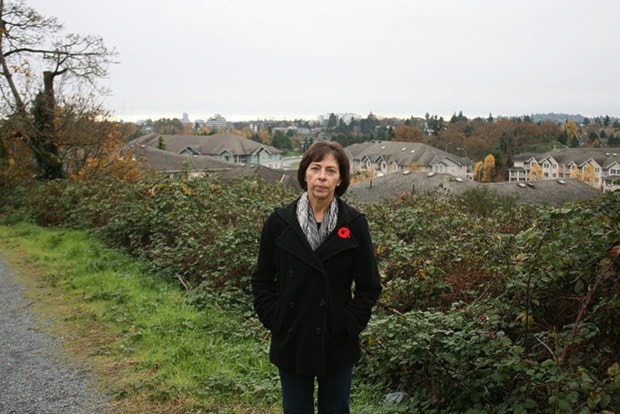Saanich is adding another town hall meeting on the Environmental Development Permit Area as last week’s gathering at the Garth Homer Centre was so heavily attended people had to be turned away.
Coun. Colin Plant kicked off Monday night council with a motion for the additional town hall meeting, which drew the support of council.
The date for the next EDPA town hall has not been set, but is expected to be soon.
“It was clear that many people left that meeting believing there would be another town hall, so in my view, it’s necessary we do one,” Plant said.
The Nov. 12 town hall meeting met the 400-person capacity of the Garth Homer auditorium 15 minutes prior to the start. Two dozen people sat in the foyer but many more were essentially turned away, Plant added.
What’s interesting is that all the registered speakers were able to get their word in. However, Plant believes another 100 to 200 people will show up.
“There was heavy rain and winds that night so who knows how many people stayed away?”
It’s also important that only the residents who didn’t attend the Nov. 12 town hall visit the next one, Plant said.
At one point someone asked for a show of hands which yielded only a few in favour of the EDPA as is, or with little reform.
“It’s an interesting lack of balance, 90 to 95 per cent of the people there want serious revisions to the EDPA. People are swearing they lost significant amounts of money [on property] due to the EDPA,” said Plant.
Because of that, he said intimidation has been a factor in various EDPA sessions, with several councillors reporting that residents were too scared to speak.
Saanich council chambers was overrun twice this year with rambunctious protesters who clapped and cheered against the EDPA bylaw, despite Mayor Richard Atwell’s pleas for order.
“I believe there might have been a few more speakers and a few more hands in support of the EDPA but it’s overwhelming for council, beyond doubt, that the EDPA bylaw needs amendments,” Plant said.
Among the most vocal in expressing their EDPA concerns is Anita Bull, lead spokesperson of the Citizens for a Responsible EDPA. The group includes registered biologist Ted Lea, a former member of the Garry Oak Ecosystem Recovery Team, who helped draft a thorough report submitted to council this month.
“The meeting was successful in that we were able to clearly show this issue is important, and as taxpayers and property owners we will not accept this significantly flawed bylaw,” Bull said.
Also joining the anti-EDPA discussion for the first time was Eric Dahli, president of the Cadboro Bay Residents Association.
Dahli threatened Cadboro Bay would secede to another community if Saanich doesn’t amend the EDPA rulings. Though it’s not the first time Cadboro Bay has threatened to secede, it’s the first time in a while.
“The [Cadboro Bay] Residents Association has not taken an official position yet, but some people have said to me if there are no positive changes to the bylaw by next May, people are going to make a motion to leave Saanich and join another municipality,” Dahli said. “I might accept that motion.”
In Cadboro Bay, where deer roam in large numbers, the very species the EDPA and invasive species bylaws are meant to protect are in fact being destroyed by deer, Dahli added.
“On one hand the EDPA legislation is in place to save areas, which is laudable and admirable, but at the same time we do nothing about deer who roam freely and destroy native plants. The deer continue to grow in numbers every year. I’m surprised the experts haven’t noticed that yet, and they’re in protected areas.”
